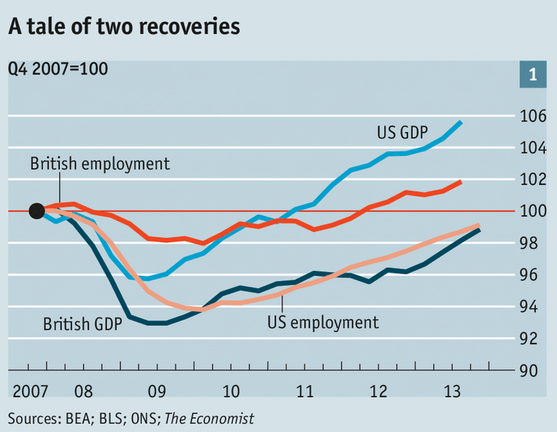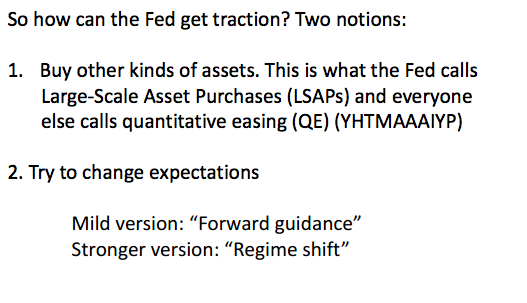Doing more with less
There’s been a lot of discussion about the impact of Abenomics. I’ve been sort of a moderate on the issue, arguing that it helped, but isn’t going to have a transformative impact. Recently I ran across a piece of data that made me slightly more optimistic about Japan:
The number of people in the world’s third-largest economy dropped by 0.17 percent or 217,000 people, to 127,298,000 as of last Oct. 1, the data said. This figure includes long-staying foreigners.
The number of people aged 65 or over rose by 1.1 million to 31.9 million, accounting for 25.1 percent of the population, it said.
. . .
Meanwhile, the country’s main working population aged 15 to 64 fell below 80 million as of Oct. 1, for the first time in 32 years due to the country’s rapidly aging society, according to the government data.
Of the total, the workforce stood at 79,010,000, down 1,165,000.
A 0.17% population decline is modest, but that last line caught my attention. That’s a 1.45% decline in a single year! If you are lazy and just read headlines you might notice that Japanese RGDP rose 1.7% last year. But just as in the US, year-over-year figures are misleading. The Q4 over Q4 figures are about 2.5% RGDP growth, almost the same as the US.
But the US working age population rose by . . . actually I can’t find the data anywhere, so I guesstimated by interpolating between 2008-2010 growth rates, and 2015-2020 forecasts. The working age population was forecast to rise by about 5 million or 2.5% between 2010 and 2015. So let’s say about 0.5% per year. BTW, the Census forecasts show the rate slowing sharply, from 0.9%/year around 2008 to 0.25%/year between 2015-20. Expect very slow RGDP growth ahead.
The Japanese RGDP figures show growth of nearly 4% per working age adult, which would be equivalent to a 4.5% RGDP growth rate in the US. That makes me a bit more optimistic about Abenomics.
Two reasons for caution:
1. Japanese figures are erratic; I expect slightly slower growth this year.
2. It’s not clear the working age population is the right metric, especially if increasing numbers of Japanese elderly are working.
However under any reasonable population assumptions the Japanese RGDP figures are more impressive than they look. Also note that the unemployment rate fell from 4.3% in January 2013 to 3.7% in January 2014, after falling only 0.2% during the previous 12 months. The 3.6% rate in February 2014 is tied for the lowest rate since the 1990s. I.e. it equals the lowest rate achieved in the Koizumi boom. Expect to see that mark broken soon.
I believe the Japanese output gap is real, but smaller than many of my fellow demand-siders assume. The big gain from Abenomics is that it reduces the debt burden, as faster NGDP growth hasn’t raise JGB yields. If both minus 0.5% and positive 1.5% CPI inflation are compatible with the zero bound on interest rates, what government in its right mind (with a debt of over 200% of GDP) wouldn’t opt for the 1.5% rate?
PS. While using Google to make sure I spelled Koizumi correctly, I came across an excellent Noah Smith post on the subject:
The fact that the spending cuts and the growth speedup exactly coincide is probably a coincidence (unless the Confidence Fairy lives in Japan and never visits Europe). But the point is, austerity didn’t hurt Japan as much as we might expect, and the 2000-07 boom was definitely not caused by a sudden surge in stimulus spending. So the Koizumi era seems not to have been a Keynesian success story.(Update: Of course, I don’t want to confuse levels with growth rates here. The deficit was at its peak during 2000-2003. The “austerity” I mention was a decrease in the rate of growth of the deficit; the decrease in the deficit didn’t really come until 2004-2007. So it’s conceivable that the large deficits of 2000-2003 “jumpstarted” a recovery, or perhaps acted with a lag. But that leaves the question of why deficits suddenly started working after not seeming to do much in the 90s, in which growth kept falling even though deficits kept rising. And it also leaves the question of why the decrease in deficits in 2004-2007, when the interest rate was still at the ZLB, didn’t noticeably hurt the recovery.)
The update made me think he got complaints from Keynesians that it’s levels that matter, not changes. Of course now Keynesians are trying to explain away the Osborne boom with exactly the opposite argument.
PPS. Just to be clear, NGDP data is the best way of testing whether Abenomics boosted AD. It did. By looking at RGDP data you test the joint hypothesis that it boosted AD, and than AD boosted RGDP.





